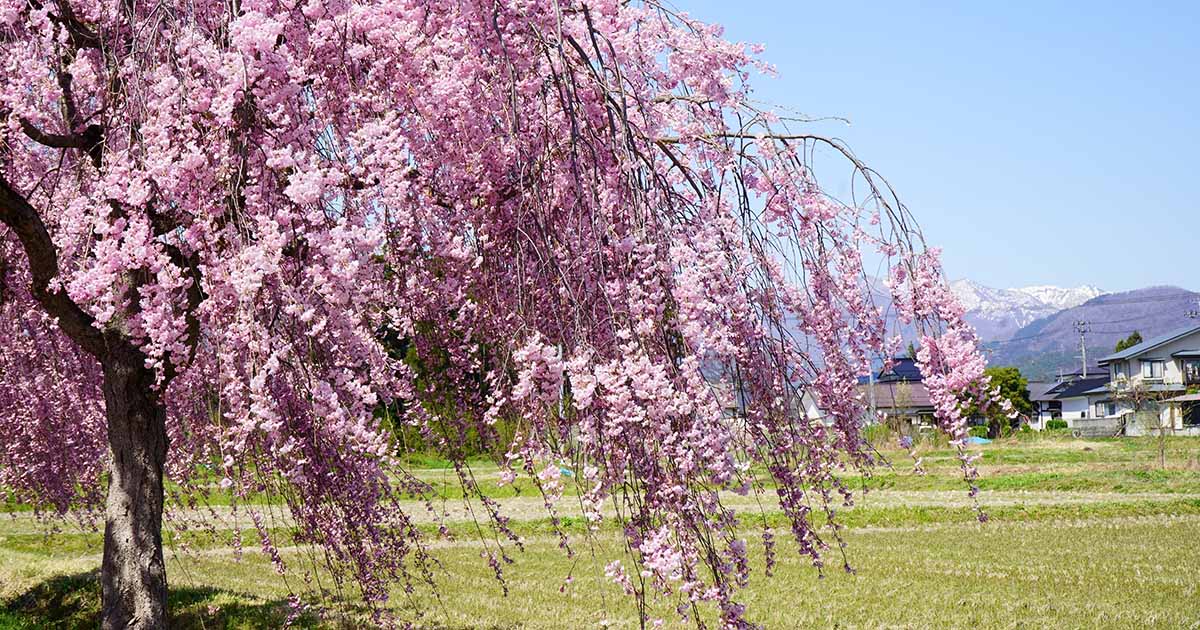
There’s a lot to love about spring. The daffodils and tulips pushing up out of the ground and opening their faces to the sun. The hostas climbing up out of the soil after their winter slumber.
And the graceful fountains of pink and white blossoms covering the weeping cherry trees.
Cities across the globe celebrate the cherry blossom blooms in the spring and enthusiasts track their flowering like football fans follow their favorite teams.
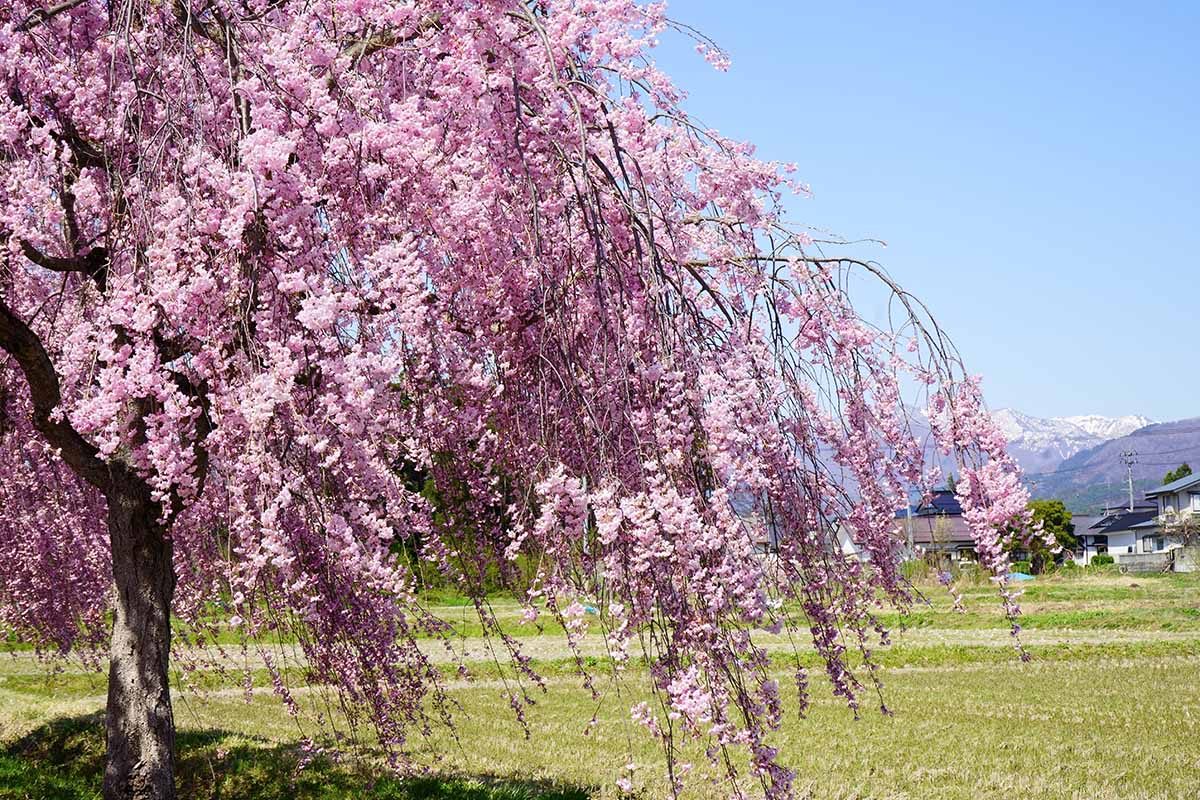
We link to vendors to help you find relevant products. If you buy from one of our links, we may earn a commission.
Part of what makes their ethereal performance so impressive is the shape of the plants. The colorful petals are stunning, but it wouldn’t be same without the draping, weeping form.
To help maintain that shape, you need to know when and how to prune these iconic trees.
Our guide to growing weeping cherry trees covers how to cultivate these trees in your backyard. In this guide, we’ll talk about how to prune your trees.
Here’s what I’ll cover:
How to Prune Weeping Cherries
Grab those pruners and slap on that sunscreen. We’re going to work.
Why You Should Prune
Unlike fruiting trees, we prune ornamental cherries to keep them healthy, encourage flowering, and to maintain a pleasing shape.
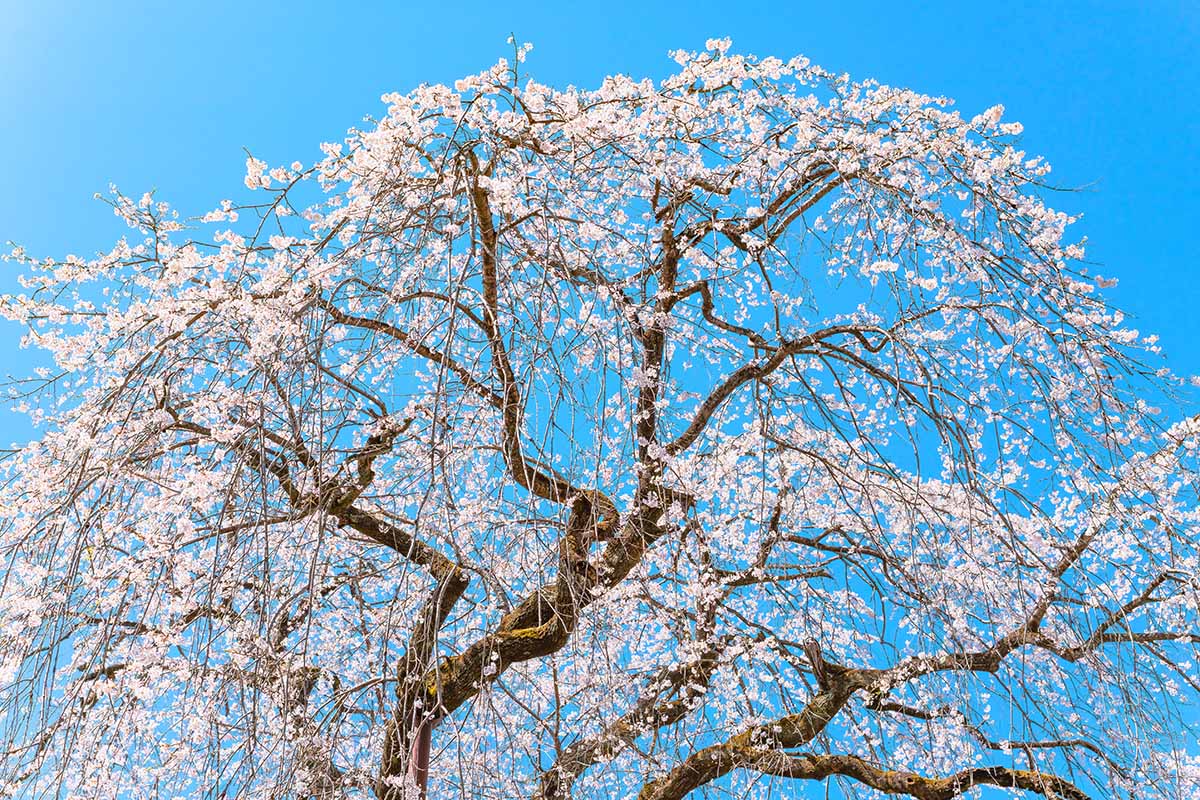
It’s much easier to maintain a flowering cherry than a fruiting specimen, but that doesn’t mean you can ignore the tree entirely.
With few exceptions, weeping cherries are grafted, which means they are made up of two different trees – one being the rootstock and the other the scion.
We also prune to ensure that the tree used to create the base – the rootstock – doesn’t try to overtake the one that was used to create the crown, a process called “reversion.”
This is one of the reasons why a weeping cherry no longer weeps.
Don’t worry, this will all make sense in a minute.
When to Prune Weeping Cherries
Prune your weeping cherry in the fall, when it’s starting to enter dormancy.
That’s right after the leaves have dropped from the tree but before winter sets in. If you wait too long and winter arrives, it’s too late.
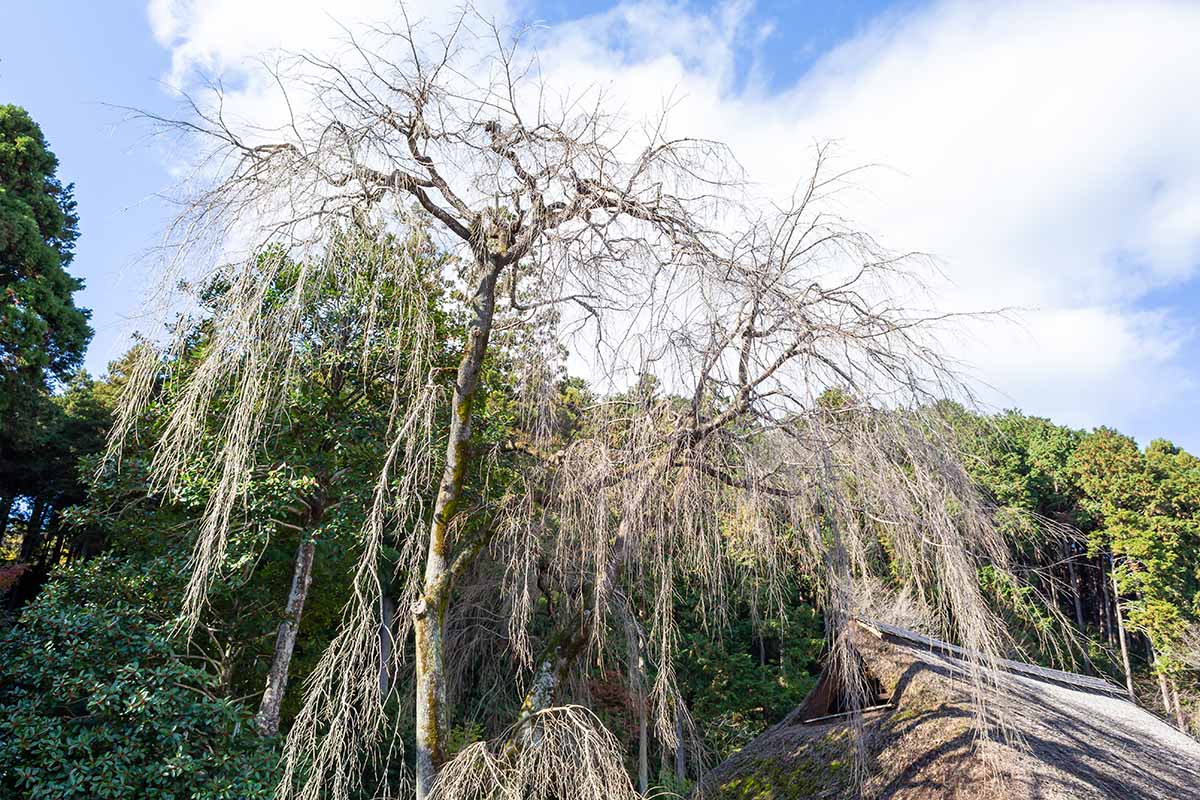
You need to start work before the wood freezes, which happens when the air temperature drops to below 32°F.
Frozen wood is brittle and can crack rather than cut cleanly, leaving ragged cuts and exposing the tree to invasion by pathogens or pests.
If you missed that window but you still want to prune the tree, you have another chance to do so in the early spring, after the weather has warmed up a little but before the branches start to bud out.
In milder areas, you can also prune in the winter, but do it on a warm day when the temperature has been above freezing for at least a few days ahead of time.
You can remove broken branches or any that are heavily infested with pests at any time of the year.
Young trees often require yearly pruning to help them maintain a good shape as they mature.
Mature trees over ten years of age might only require touch-up pruning as branches break or suckers develop.
At a minimum, you’ll need a pair of secateurs or bypass pruners and something to take out larger branches, like a saw or lopper.
You’ll also need a pole saw or a ladder if you need to reach high branches.
You don’t need to use a product to seal the cuts. Trees produce their own seal when they’re cut and research has concluded that sealing doesn’t help and can even hinder the healing process.

It can trap moisture into the cut, encouraging fungal growth and decay, and obstruct the release of sap, which is the tree’s natural healing effort.
Your tools should all be cleaned before you start working.
You can wipe them thoroughly with isopropyl alcohol, a 10 percent bleach solution, or scrub them in hot, soapy water. This process removes any pathogens that could sicken your tree.
A Note on Reversion
As we mentioned, weeping cherries are generally grafted specimens using two different trees: one for the base, known as the “rootstock,” and one for the top, known as the “scion.” These trees are joined together a few inches above the root flare.
Sometimes, the rootstock sends out branches and threatens to take over the grafted scion. You can easily identify these because they will appear below the graft union and they’ll be growing straight upwards rather than in a weeping form.
Reversion is bad, because it can turn your weeping tree into a standard upright one if you don’t stay on top of removing the branches. Plus, it’s downright ugly because you end up with a half upright, half weeping tree.
If you ever see these kind of branches, prune them off immediately as close to the trunk or stem as you can.
The Pruning Process
First things first, whenever suckers form, get rid of ‘em. Suckers are sprouts coming out of the tree at the base.
These divert energy from the tree and look unattractive because they clutter up the growing area.
Suckers can appear anywhere below the graft point and should be removed as close to the ground or trunk as possible.
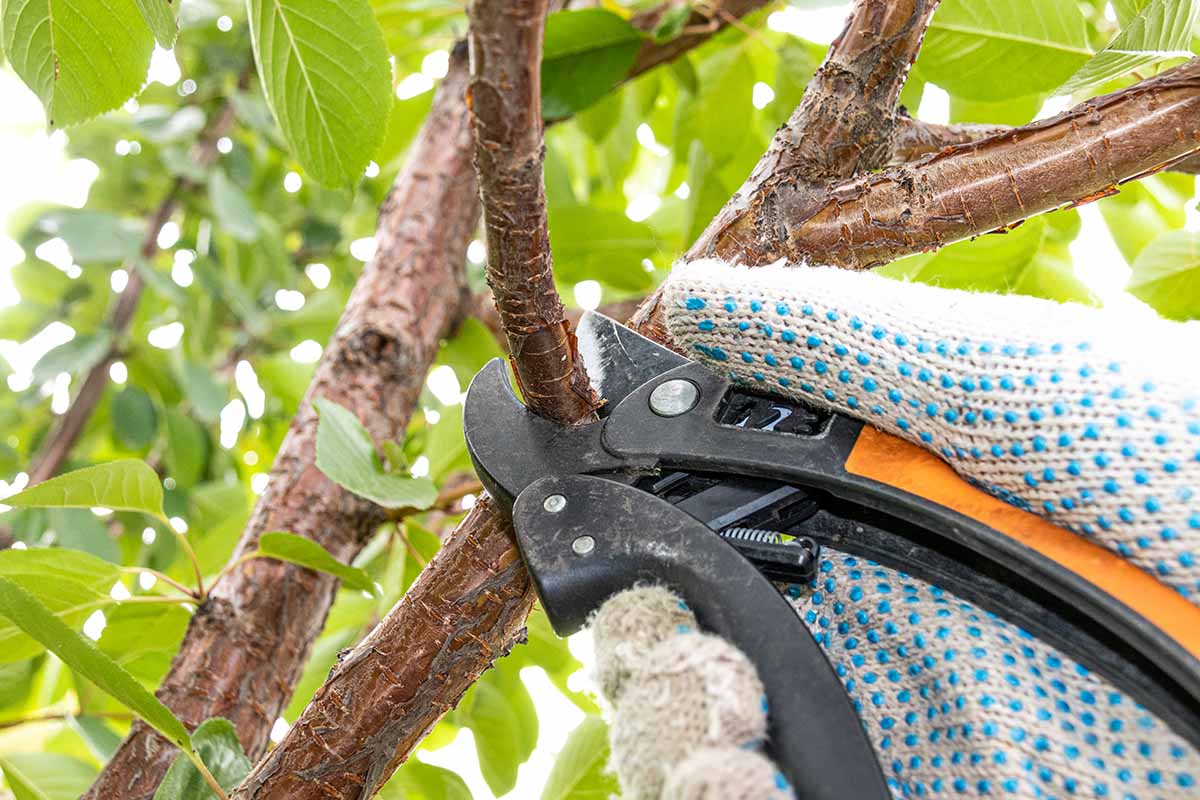
Next, remove any dead, diseased, crossing, or heavily pest-infested branches.
Then you can start to assess the branches that should be removed to open up the crown. Any branches with a tight crotch, which means they emerge from the same spot and touch each other at their bases, should be addressed.
One of the branches should be removed. Look at both and determine which looks healthier or has a nicer shape. Remove the less desirable one.
Finally, cut back branches as needed to maintain a nice shape or reduce the size slightly.
You don’t need to worry about whether to prune out old or new wood unless there is an older branch that isn’t as floriferous as the rest.
Try to avoid removing more than a third of the branches at once and even less if you’re doing your pruning in the spring.
Early spring pruning can result in excessive regrowth, which is metabolically taxing for the tree, leaves it exposed to pathogens, and slows its recovery.
Give Your Weeping Cherry a Glow Up
I think of weeping cherries as the supermodels of the tree world. They don’t need a lot of work to make them look great.
Some basic pruning and maintenance takes them from the gal or guy next door to the cover of Vogue.
What do you love about your weeping cherry? Are you running into any trouble giving it the snip? Fill us in on everything in the comments section below.
I genuinely hope this guide was helpful for you and if you liked it, we’ve got more good stuff for you to enjoy.
For more information about growing cherry trees in your garden, have a read of these guides next:





